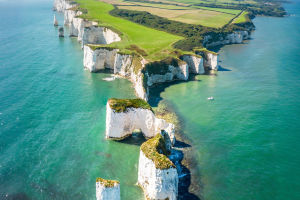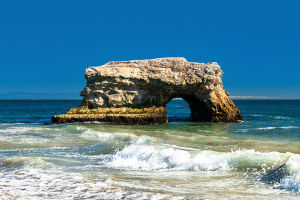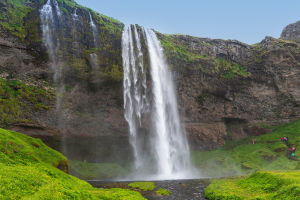If you're planning a trip to Argentina and looking for a unique destination off the beaten path, Talampaya National Park is a must-visit. This UNESCO World Heritage site, located in La Rioja province, combines stunning desert landscapes, ancient fossils, and fascinating geological formations.
The park is perfect for those who want to explore both history and nature. Let’s dive into the details of what makes Talampaya so special and how to plan your visit to make the most of it!
Location and How to Get There
Talampaya National Park is located in western Argentina, in the La Rioja province, about 200 kilometers from the city of La Rioja. The most common way to reach the park is by car. If you're traveling from Buenos Aires, you can fly to La Rioja and rent a car to continue your journey to the park.
The road to the park is well-maintained, though it’s recommended to travel with a GPS or map to avoid getting lost. Alternatively, you can take guided tours from La Rioja city or nearby towns, which typically include transport and a knowledgeable guide.
Opening Hours and Admission Fees
Talampaya National Park is open year-round, offering visitors the chance to experience its beauty no matter when they visit. The park’s official opening hours are from 8:00 AM to 6:00 PM, with extended hours during the high tourist season (December to February). Entry to the park costs around 5 USD for adults (500 Argentine Pesos). Discounts may be available for children, students, or large groups, so it’s worth checking in advance or at the ticket counter.
Best Time to Visit Talampaya
The best time to visit Talampaya is during the autumn (April to June) and spring (September to November) months when the temperatures are milder, ranging from 18°C to 25°C (64°F to 77°F). This makes hiking and exploring much more comfortable. The summer months (December to February) can be extremely hot, with temperatures often exceeding 40°C (104°F), so if you choose to visit during this time, be prepared for the heat.
Winter (June to August) in Talampaya is cooler but still manageable, with temperatures around 10°C to 18°C (50°F to 64°F), which is perfect for those who want to avoid crowds.
Things to See and Do in the Park
Talampaya National Park is famous for its stunning landscapes, and there are several highlights we shouldn’t miss:
Talampaya Canyon: This massive red rock canyon is the park's main attraction. It’s over 100 meters deep in some places and offers spectacular views. We can take a guided tour through the canyon, where the guide will share insights into the geology and history of the area.
Fossils and Paleontological Sites: Talampaya is home to fossils dating back to the Triassic period. At the Fossil Site (Sitio Paleontológico), we’ll see the remains of prehistoric animals, such as ancient reptiles. If you’re a fan of paleontology, this is the place for you.
Devil’s Throat (La Garganta del Diablo): One of the most iconic rock formations, La Garganta del Diablo is a massive vertical gorge in the earth that’s awe-inspiring to visit. It’s an excellent spot for photography and an unforgettable natural wonder.
The Cathedral (La Catedral): This rock formation resembles the spires of a cathedral, and it’s one of the park’s most photographed spots. Walking around the cathedral-like formations, we feel as if we’re in a surreal, ancient temple.
We can also enjoy a guided jeep tour around the park, where we get the chance to see other unique geological formations and the desert wildlife.
Practical Tips for Visiting Talampaya
To make the most of your visit, here are some helpful tips:
1. Guided Tours: We highly recommend taking a guided tour, especially for first-time visitors. The park offers guided excursions in Spanish and English, and these tours provide a wealth of knowledge about the park's history and geology.
2. What to Wear: Wear comfortable shoes suitable for walking and hiking, especially if you plan to explore the canyon and rock formations. A wide-brimmed hat and sunglasses are also essential for sun protection.
3. Bring Water and Snacks: The park is located in a desert region, so it’s crucial to stay hydrated. There are limited food and drink facilities inside the park, so we recommend bringing water, snacks, and sunscreen.
4. Sun Protection: The sun can be very intense, especially in summer, so pack a good sunscreen (SPF 30+), lip balm with sun protection, and a hat. Don't forget to reapply sunscreen throughout the day.
5. Respect Nature: Talampaya is a protected area, so we must follow all the park's rules, including sticking to the marked trails and not disturbing the wildlife.
Where to Stay
There are no accommodations directly inside Talampaya National Park, but several towns nearby offer options ranging from budget hotels to more comfortable lodges. The city of Villa Unión, located about 40 kilometers from the park, is the closest place with lodging options. In Villa Unión, we’ll find a range of accommodations including hotels, hostels, and inns. If you prefer something more rustic, there are also campgrounds near the park for a more nature-immersive experience.
Why Visit Talampaya?
Talampaya National Park offers a unique opportunity to immerse ourselves in the rugged beauty of Argentina’s desert landscapes, where we can discover ancient fossils and awe-inspiring rock formations. Its rich history, striking natural scenery, and diverse wildlife make it a must-visit for anyone seeking adventure and wonder. For those who love geology, nature, or simply wish to experience an untouched corner of the world, Talampaya guarantees an unforgettable journey.
Lykkers, have you been to Talampaya or any other natural parks in Argentina? Feel free to share your experiences or tips with us — we’d love to hear from you!


